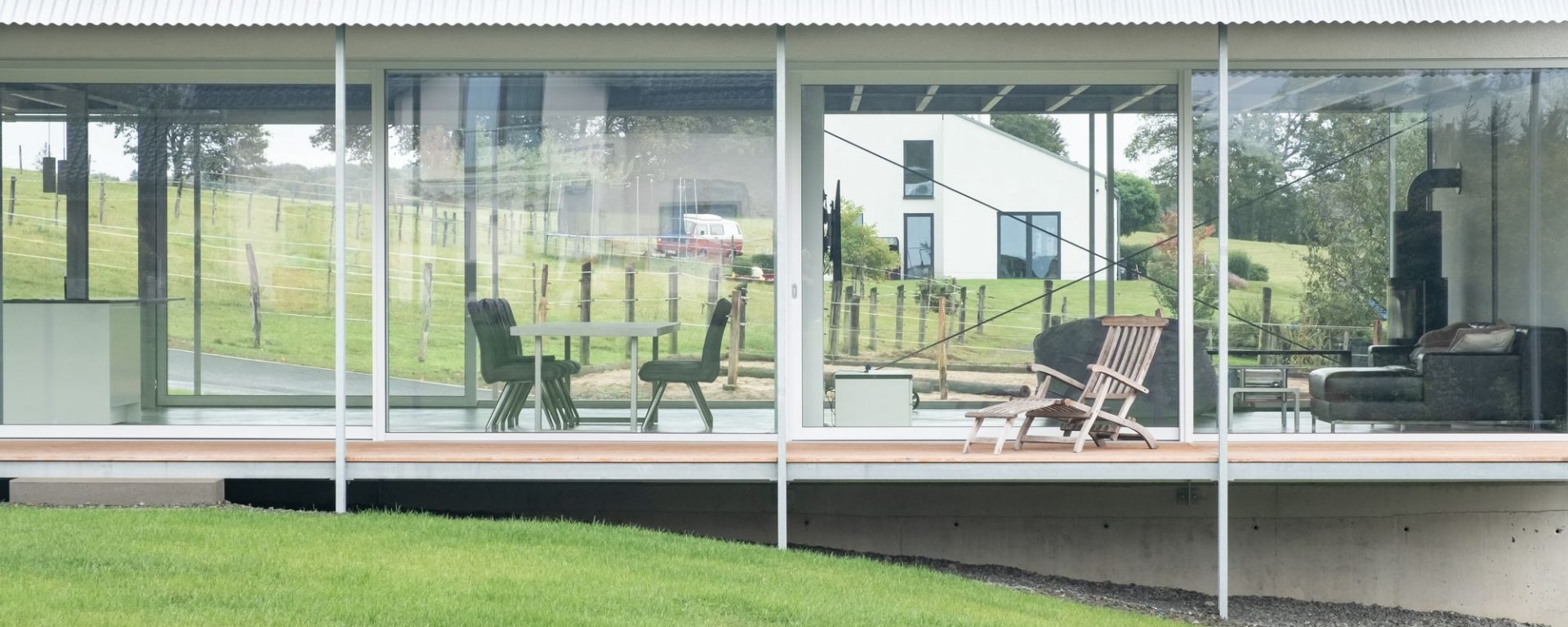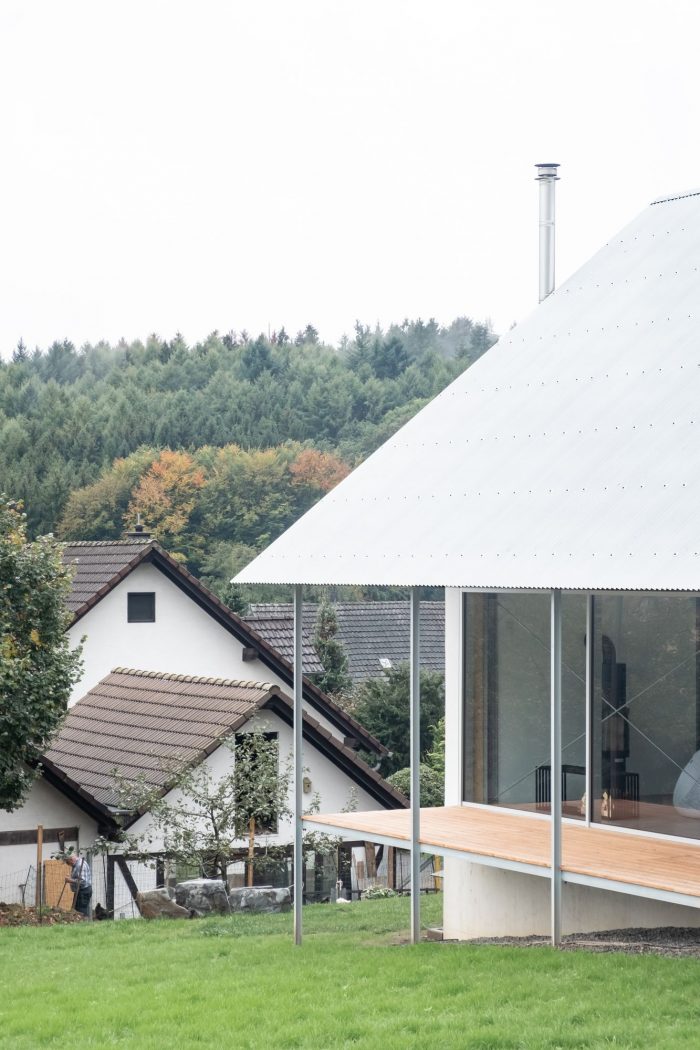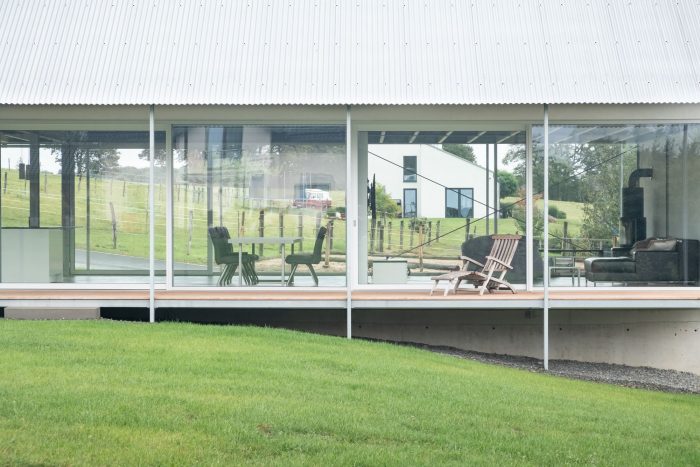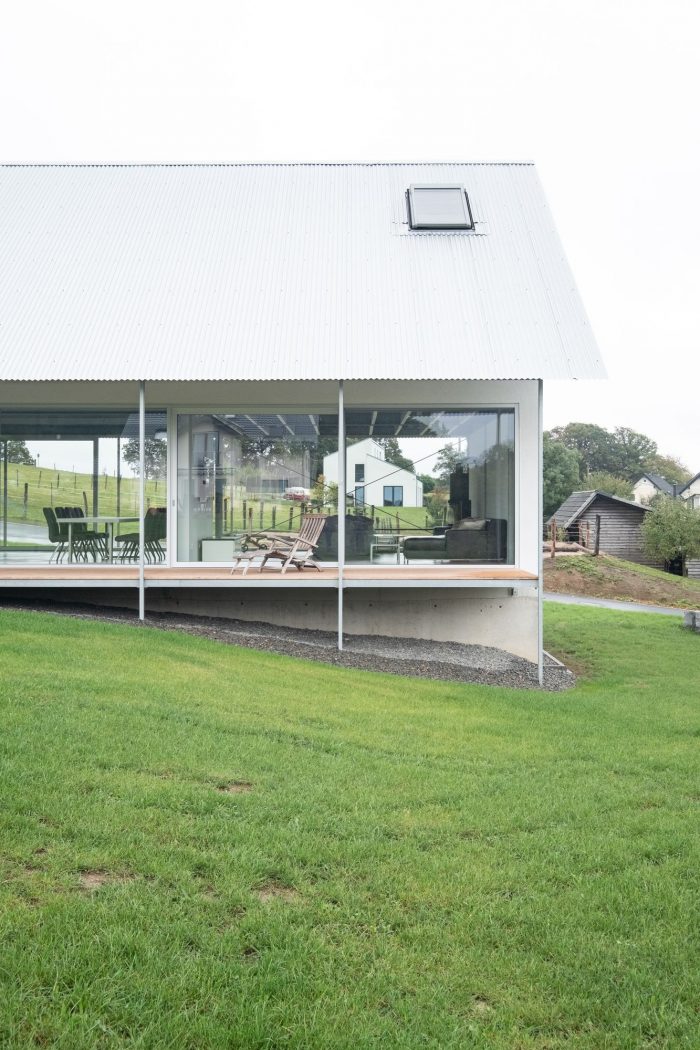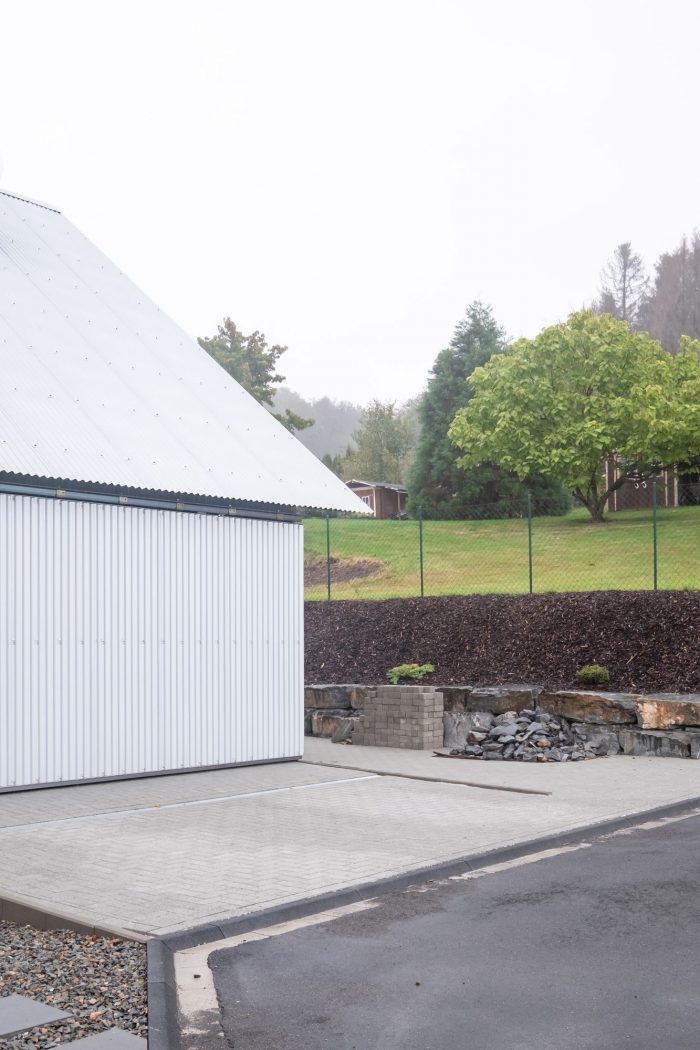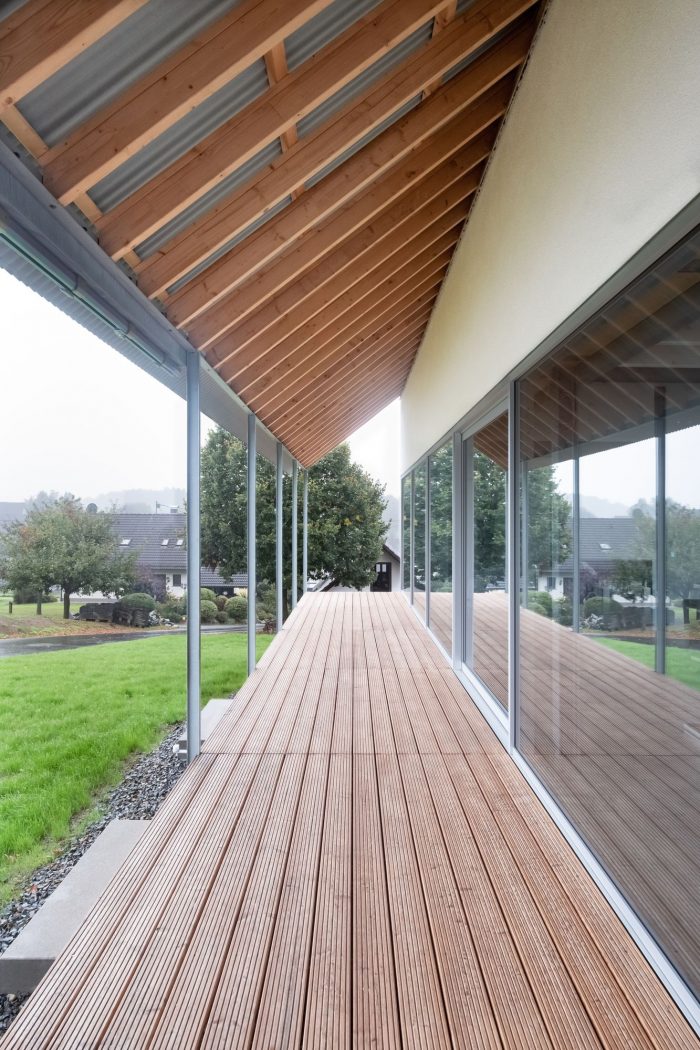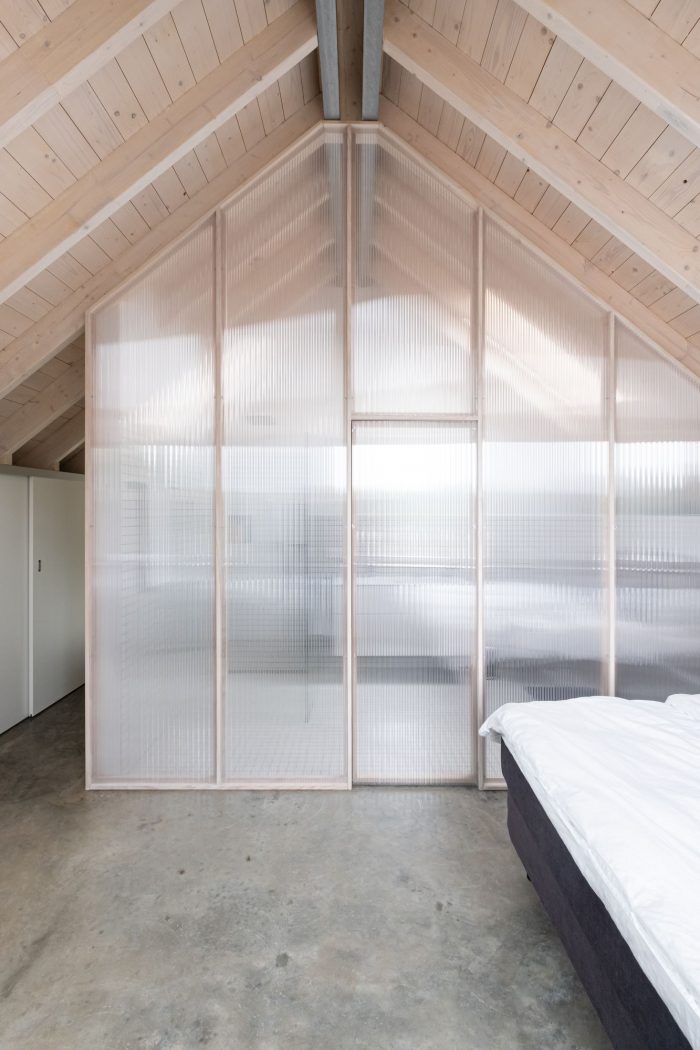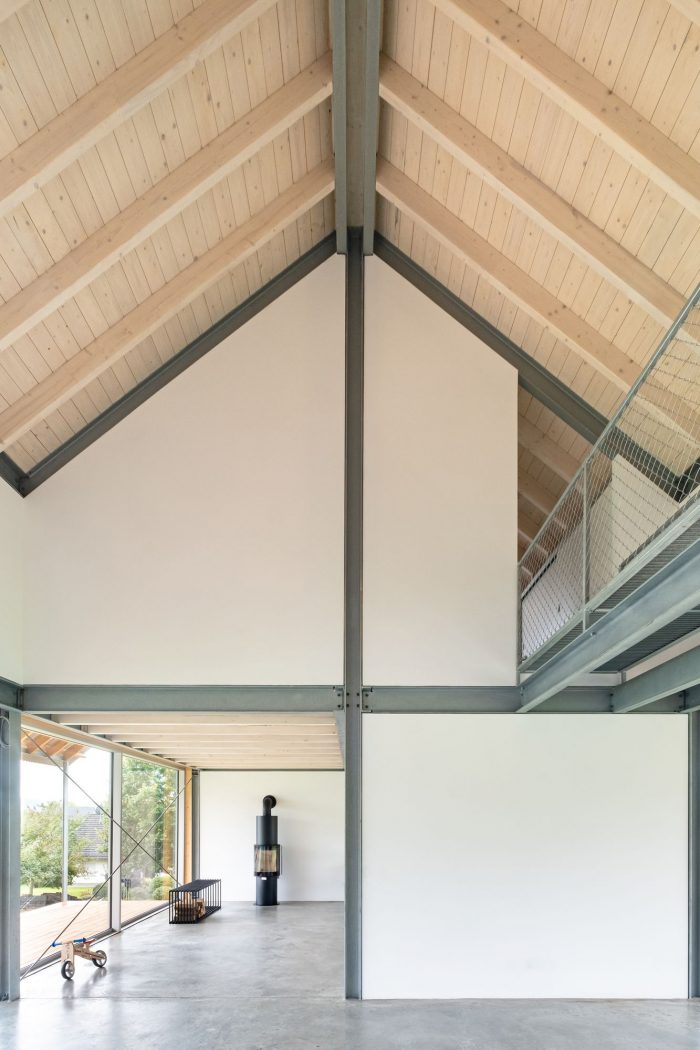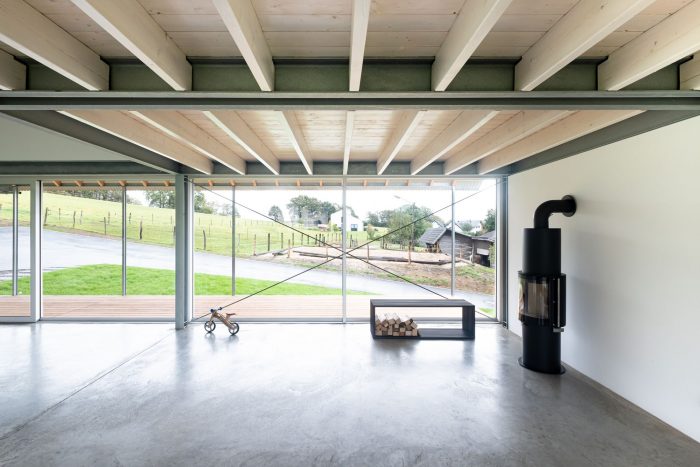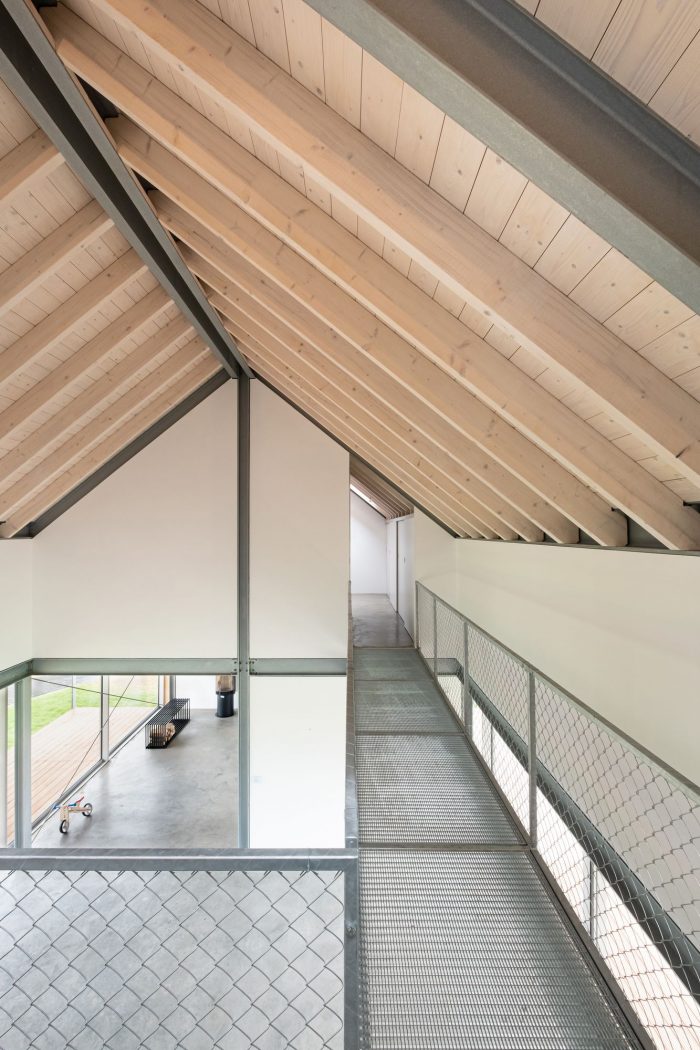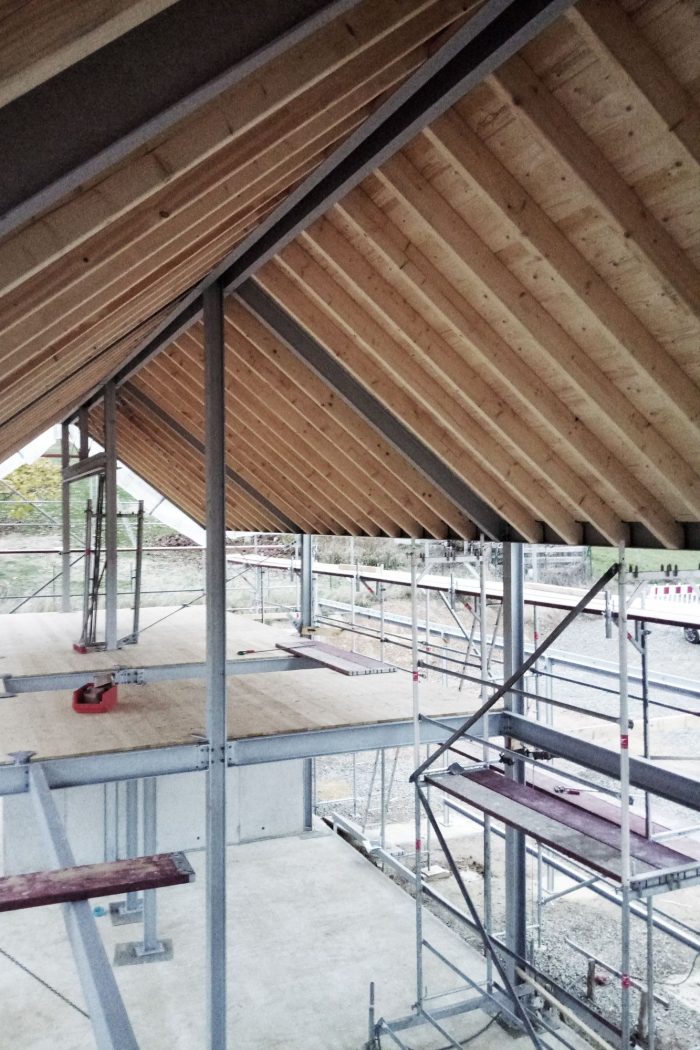D 号楼6是位于德国北莱茵-威斯特法伦州的极简主义住宅,由AretzDürrArchitektur设计。设计任务是在Oberberg地区建造一个低成本且可持续的单户住宅,将周围的景观区域纳入生活空间,并为该地区的阴雨天创建有遮盖的室外空间。
从类型上讲,新建筑遵循传统的一居室深长屋。主要房间占据整个宽度,并沿长度方向排列。房屋的两端专门用于不同的功能:南部的居住区,北部的车库和储藏室。对于Oberberg而言,典型的做法是在这里用混凝土制成的坚固底座将居住空间提升到自然生长的斜坡上方一点,以保护他们免受天气影响。
斜屋顶的悬挑设计用于夏季和冬季的太阳站立。在夏季,它可以保护居住空间和沿途的阳台不致过热。在冬季,双层玻璃幕墙使太阳能能够进入生活空间并激活浮动水泥砂浆作为夜间存储。通风的屋顶饰面质量轻巧,可支撑夏季隔热,并与大的屋顶开口一起提供有效的夜间降温。
House D // 6 is a minimal residence located in North Rhine-Westphalia, Germany, designed by Aretz Dürr Architektur. The design task was to construct a low-cost and sustainable single-family dwelling in the Oberberg region, which incorporates the surrounding landscape area into the living space and creates covered outdoor spaces for the rainy summer days in the region.
In its typology, the new building follows the traditional, one-room deep longhouse. The main rooms take up the entire width and are lined up lengthwise. The ends of the house are dedicated to different functions: Living area in the south, garage and storage rooms in the north. Typical for Oberberg, a solid base, here made of concrete, lifts the living space slightly above the naturally grown slope to protect them from the weather.
The overhang of the pitched roof is designed for both summer and winter sun stands. In summer, it protects the living space and the verandas along the length from overheating. In winter, the double glazed facade enables the solar gains to enter the living space and activate the floating cement screed as a night storage. With its reduced mass, the ventilated roof cladding supports summer thermal insulation and, together with the large roof openings, provides effective night cooling.
Design:AretzDürrArchitektur
Photography: Luca Claussen

